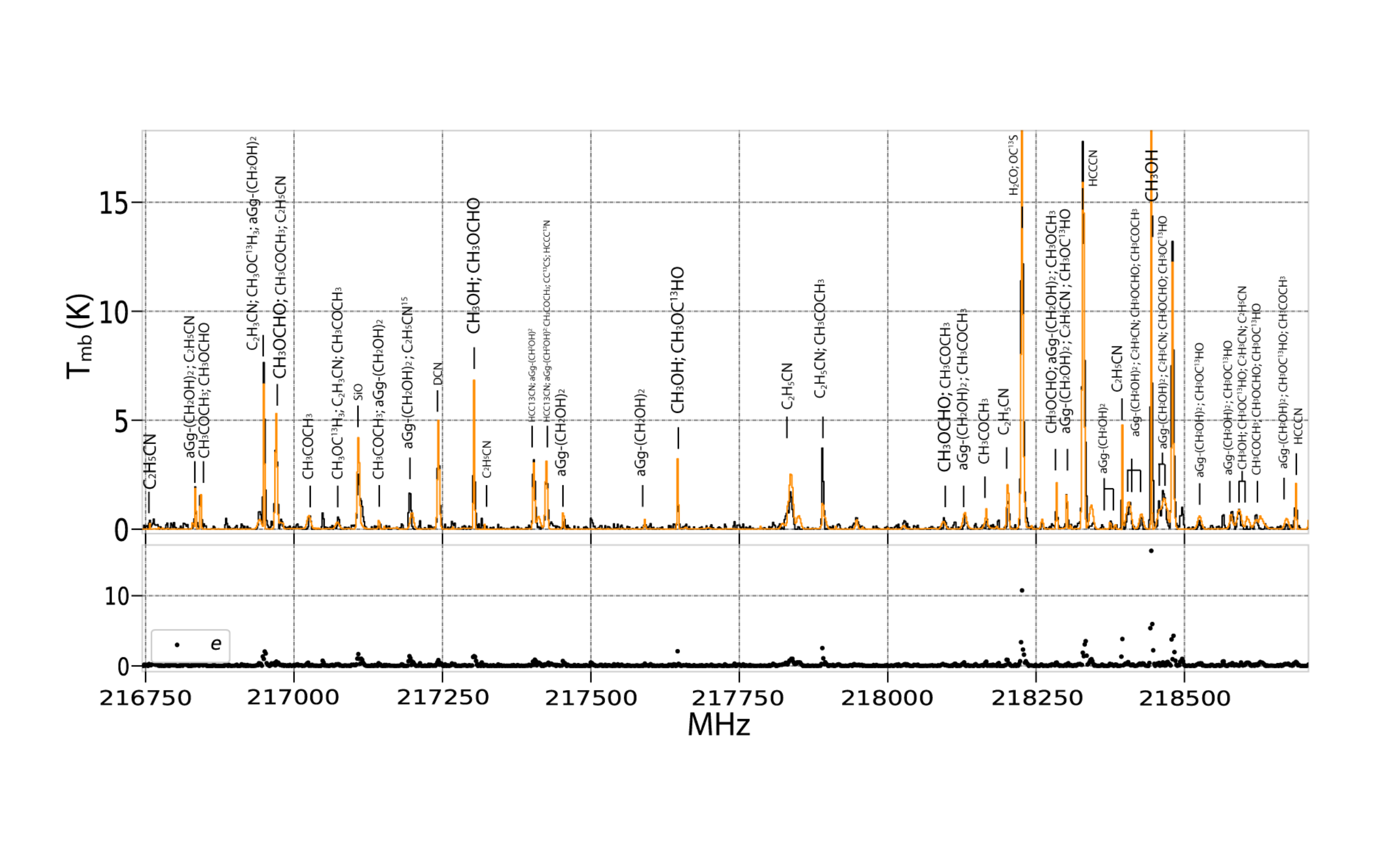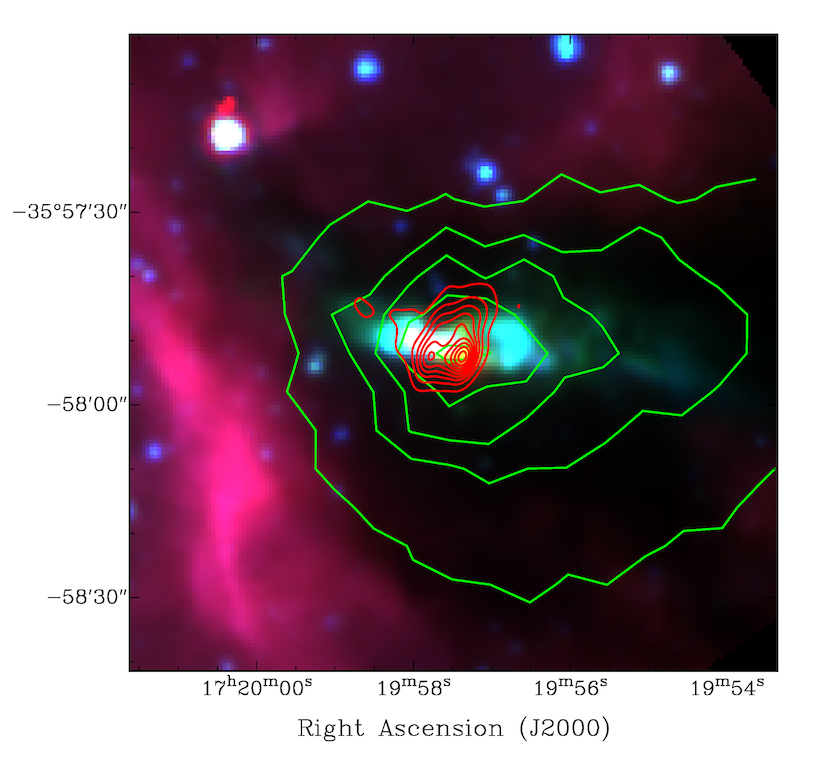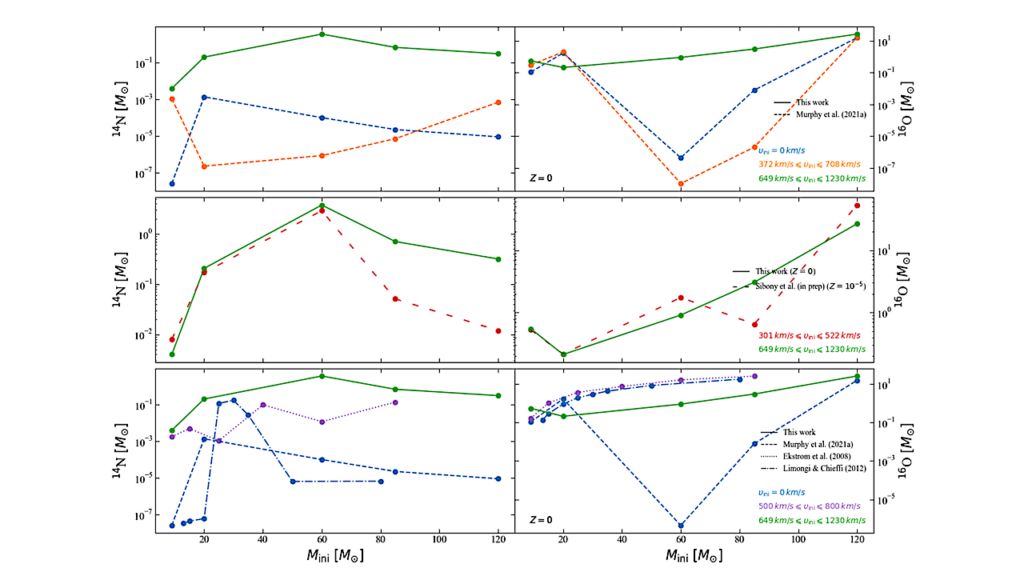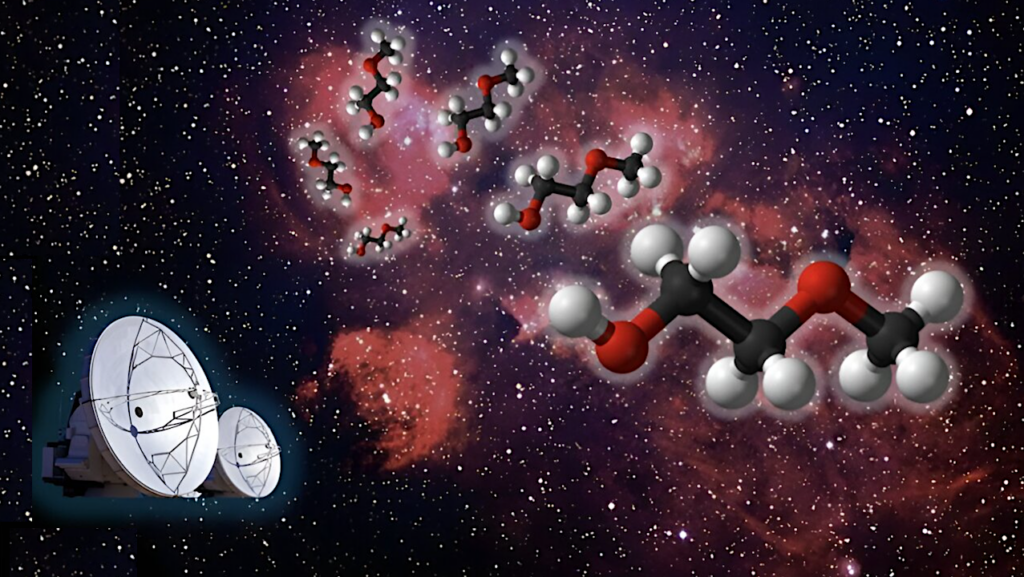Interstellar Complex Organic Molecules Towards Outflows From The G351.16+0.70 (NGC 6334 V) Massive Protostellar System

G351.16+0.70 is a relatively well-studied High Mass Star Forming Region with at least two main bipolar outflow structures originating from an OB embedded star and multiple IR cores.
Using high-resolution and large bandwidth SMA observations, we studied its molecular content to probe the emission of iCOMs which could be related to the bipolar outflows or their jets. We analyzed the emission spectra in the 1mm band within 8 GHz bandwidth coverage, from 216.75 to 220.75 GHz, and from 228.75 to 232.75 GHz. Employing the LTE approximation using the XCLASS software, we identified 260 emission lines arising from iCOMs. The emission lines in the synthetic emission spectra could be explained by 11 iCOMs and 5 molecular isotopologues.
Additionally, we analyzed the outstanding broad iCOM emission lines by using integrated and velocity field maps, searching for extended emission and velocity gradients related to molecular outflows. Ro-vibrational transitions of CH3OH, C2H3CN, CH3OCHO, CH3COCH3, and aGg’-(CH2OH)2 present evidence of extended emission that does not fit with spherical morphology and that follows the path of the low-velocity 13CO outflow.
The multiple outflows in the system are revealed also by the CO (2-1) and SiO (5-4) emission, but in particular we have discovered a so-called extremely high velocity outflow (|VMax−VLSR|∼60 km s−1). Additionally, we provide the full line catalog of iCOMs along the 8 GHz bandwidth produced by the main protostellar core.

Map of the continumm emision towards G351. The red contours show the 1.4 millimeter continuum emission, whereas the green contours show the 870 𝜇m emission. In both contour maps the first contour starts at 20% of the peak emission with a contour spacing of 10%. The background shows the 3 color mid-IR image from Spitzer. — astro-ph.GA
O. S. Rojas-García, A. I. Gómez-Ruiz, A. Palau, M. T. Orozco-Aguilera, S. E. Kurtz, M. Chavez Dagostino
Comments: 19 pages, 14 figures, 7 tables
Subjects: Astrophysics of Galaxies (astro-ph.GA); Solar and Stellar Astrophysics (astro-ph.SR)
Cite as: arXiv:2303.02527 [astro-ph.GA] (or arXiv:2303.02527v1 [astro-ph.GA] for this version)
Submission history
From: Omar Sergio Rojas García
[v1] Sat, 4 Mar 2023 23:37:20 UTC (5,565 KB)
https://arxiv.org/abs/2303.02527
Astrobiology, Astrochemistry








